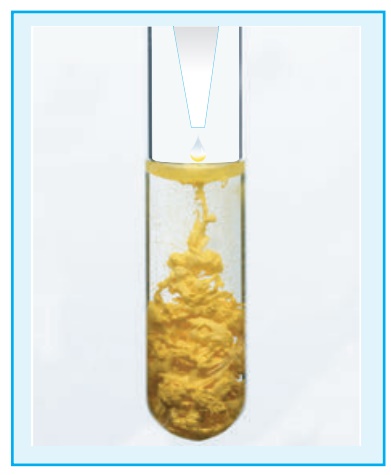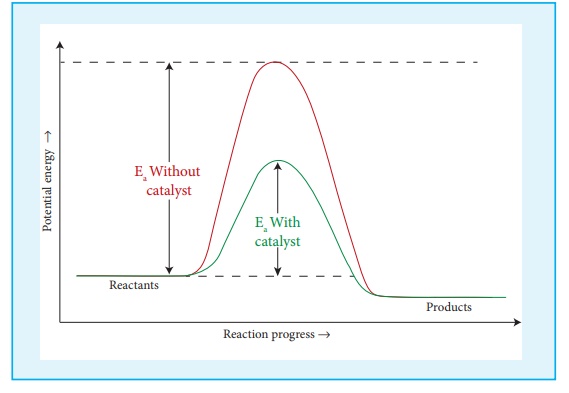Chemical Kinetics - Factors affecting the reaction rate | 12th Chemistry : UNIT 7 : Chemical Kinetics
Chapter: 12th Chemistry : UNIT 7 : Chemical Kinetics
Factors affecting the reaction rate
Factors
affecting the reaction rate:
The rate of a reaction
is affected by the following factors.
1.
Nature and state of the reactant
2.
Concentration of the reactant
3.
Surface area of the reactant
4.
Temperature of the reaction
5.
Presence of a catalyst
1. Nature and state of the reactant:
We know that a chemical
reaction involves breaking of certain existing bonds of the reactant and
forming new bonds which lead to the product. The net energy involved in this
process is dependent on the nature of the reactant and hence the rates are
different for different reactants.
Let us compare the
following two reactions that you carried out in volumetric analysis.
1). Redox reaction
between ferrous ammonium sulphate (FAS) and KMnO4
2). Redox reaction
between oxalic acid and KMnO4
The oxidation of oxalate
ion by KMnO4 is relatively slow compared to the KMnO4 heating
is required for the reaction between KMnO4 and Oxalate ion and is
carried out at around 60ºC .
The physical state of
the reactant also plays an important role to influence the rate of reactions.
Gas phase reactions are faster as compared to the reactions involving solid or
liquid reactants. For example, reaction of sodium metal with iodine vapours is
faster than the reaction between solid sodium and solid iodine.
Let us consider another
example that you carried out in inorganic qualitative analysis of lead salts.
If you mix the aqueous solution of colorless potassium iodide with the
colorless solution of lead nitrate, precipitation of yellow lead iodide take
place instantaneously, whereas if you mix the solid lead nitrate with solid
potassium iodide, yellow coloration will appear slowly.

2. Concentration of the reactants:
The rate of a reaction increases with the increase in the concentration of the reactants. The effect of concentration is explained on the basis of collision theory of reaction rates. According to this theory, the rate of a reaction depends upon the number of collisions between the reacting molecules. Higher the concentration, greater is the possibility for collision and hence the rate.
3. Effect of surface area of the reactant:
In heterogeneous
reactions, the surface areas of the solid reactants play an important role in
deciding the rate. For a given mass of a reactant, when the particle size
decreases surface area increases. Increase in surface area of reactant leads to
more collisions per litre per second, and hence the rate of reaction is
increased.For example, powdered calcium carbonate reacts much faster with
dilute HCl than with the same mass of CaCO3 as marble
4. Effect of presence of catalyst:
So far we have learnt,
that rate of reaction can be increased to certain extent by increasing the
concentration, temperature and surface area of the reactant. However
significant changes in the reaction can be brought out by the addition of a
substance called catalyst. A catalyst is substance which alters the rate of a
reaction without itself undergoing any permanent chemical change. They may
participate in the reaction, but again regenerated and the end of the reaction.
In the presence of a catalyst, the energy of activation is lowered and hence,
greater number of molecules can cross the energy barrier and change over to
products, thereby increasing the rate of the reaction.

Related Topics